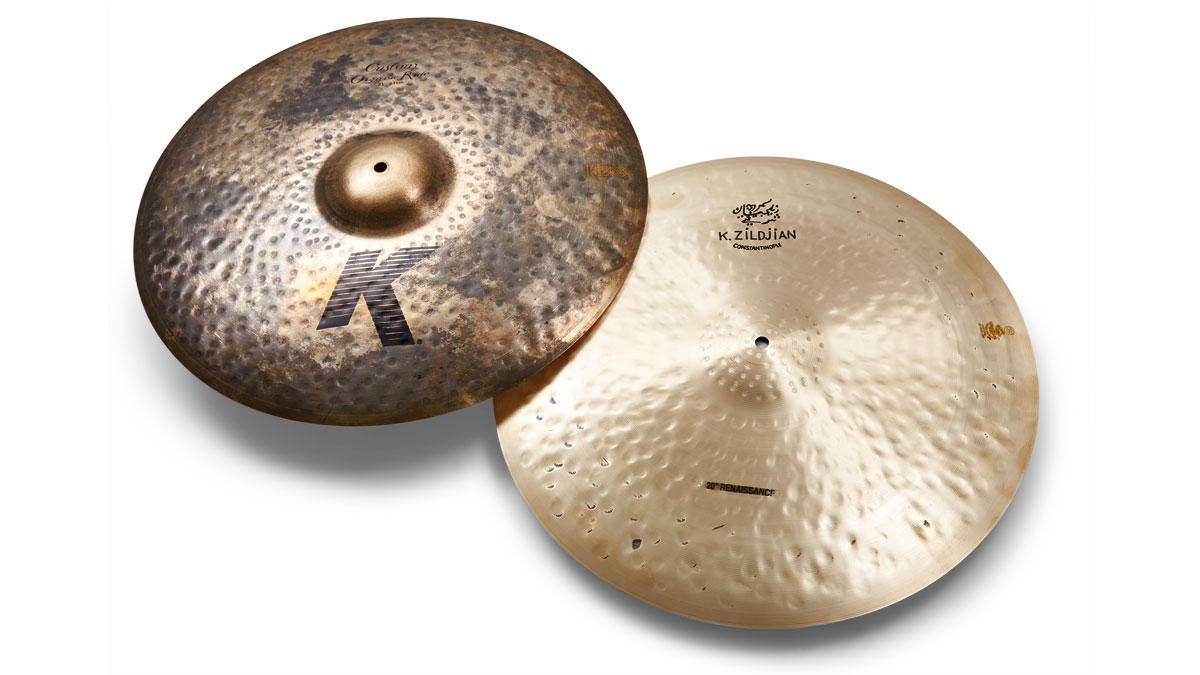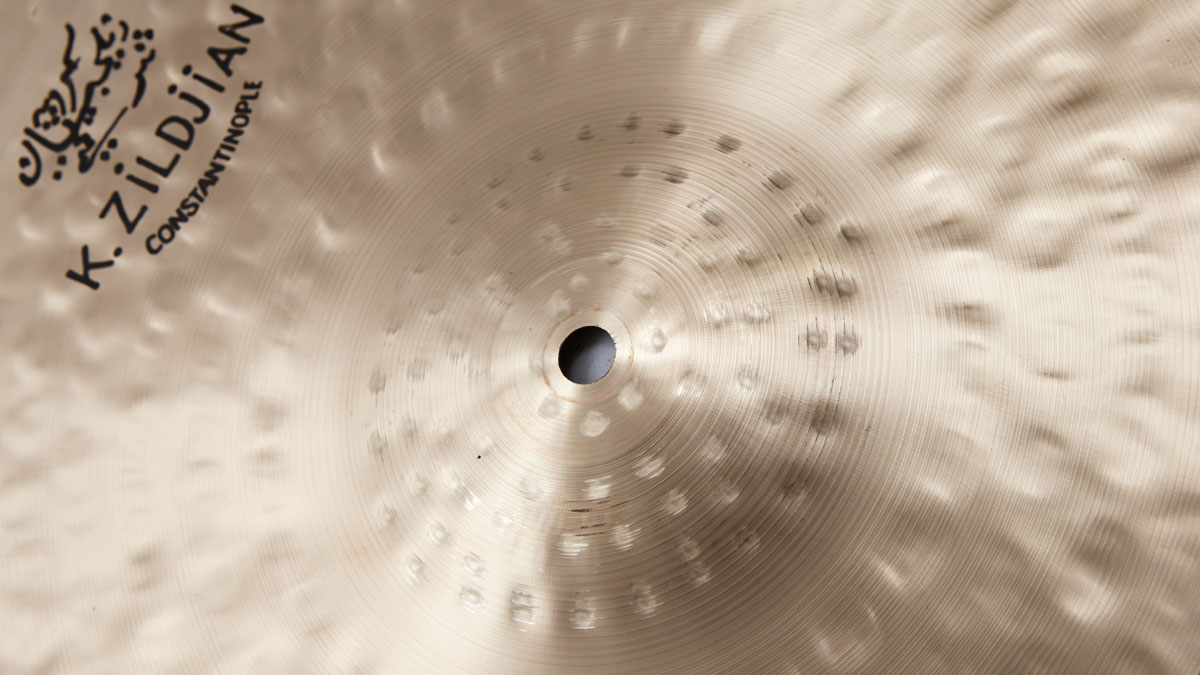MusicRadar Verdict
The 20" Constantinople Renaissance ride is a gorgeous ultra-fine instrument - as good as it gets.
Pros
- +
A beautiful cymbal.
Cons
- -
None.
MusicRadar's got your back

Zildjian K Constantinople Renaissance (right)

Zildjian K Constantinople Renaissance
Cymbal variations just keep on coming, and it is to the manufacturers' credit that each addition has something unique to offer.
Zildjian has had a particularly fruitful past couple of years with the introduction of the vintage style K Keropes, and the latest off the K production line is this beauty - the K Constantinople Renaissance ride. This cymbal partners the already available 22" version, Zildjian again enlisted the input of jazz great Adam Nussbaum.
Build
Shiny silvery-gold with an understated opulence, the 20" Constantinople is a stunner. Each cymbal is unique, and has been handmade with minute variations.
In fact, this one has '1764 grams' (weight) inked on the underside of the bell, even though Zildjian's blurb gives the weight range as 1,786 to 1,871 grams. Fine lathing overlays top and bottom, and the upper surface has irregular dimple hammering, while the small, low profile bell is over- hammered with moderate indentations.
As well as the evocative K Zildjian Constantinople logo, each cymbal is engraved beneath with the familiar Armand Zildjian signature.
Hands On
We fell totally in love with the 20" Renaissance immediately. It sounds as gorgeous as it looks. There's something magical about that vintage logo, while the Constantinople name summons up exotically dusky, edge-of-the-orient flavours.
Make no mistake, this is the most luxuriously soft, buttery, harmoniously cushioned ride ever. Yet the stick articulation is always crisp and clear. Where the 22" version has a bell which is unlathed underneath, this 20" has a smaller, low profile and over-hammered bell that is supple yet tinkly and fruity, seamlessly complementing the rest of the pliant surface.
The main ride character itself is low pitched yet authoritative and needs careful handling. You do need to play off the surface, preferably with a small(ish) beaded stick.
A bit of the superlative touch of a Nussbaum or Bill Stewart would come in handy. We took it out on a rare jazz gig, playing lots of ten-to-ten, but occasionally the band got fairly loud, whereupon we were a little taken aback to find the ride was more delicate than we had suspected.
Remember, this was a particularly lightweight specimen and it demands a certain elegance that was sometimes found a trifle wanting in the music (oh, alright, in the drummer).
Crashing and riding builds up a joyous controlled wash, but again being a light cymbal it requires judicious handling. The upshot is that this 20" may best be suited to a smaller combo, say a piano trio or intimate acoustic, folky, worldy setting. Alternatively you could try the 22".
And for a stronger jazz-soul setting you might find the K Keropes more suitable. The Keropes are a touch meatier, while the 20" Constantinople is cosier and spongier. We may be banging on a bit here but I massively rate this cymbal, utterly gorgeous and close to perfection.
“The EP635 delivers the unmistakable high-gain aggression and clarity that Engl fans love”: Engl packs its iconic Fireball head into a compact dual-channel stompbox with onboard noise gate and IR support
"There had to be some sort of telepathy going on because I've never seen spontaneous inspiration happen at that level”: The genius of Eric Clapton's controversial masterpiece, Layla
"I said, ‘What’s that?!’ He looked at me strange and said, ‘We’re line checking. We’ll be gone in five minutes’. I said, ‘You won’t - meet me in that room in 10 minutes’": How a happy synth accident inspired a US number 1 single for Terence Trent D’Arby









